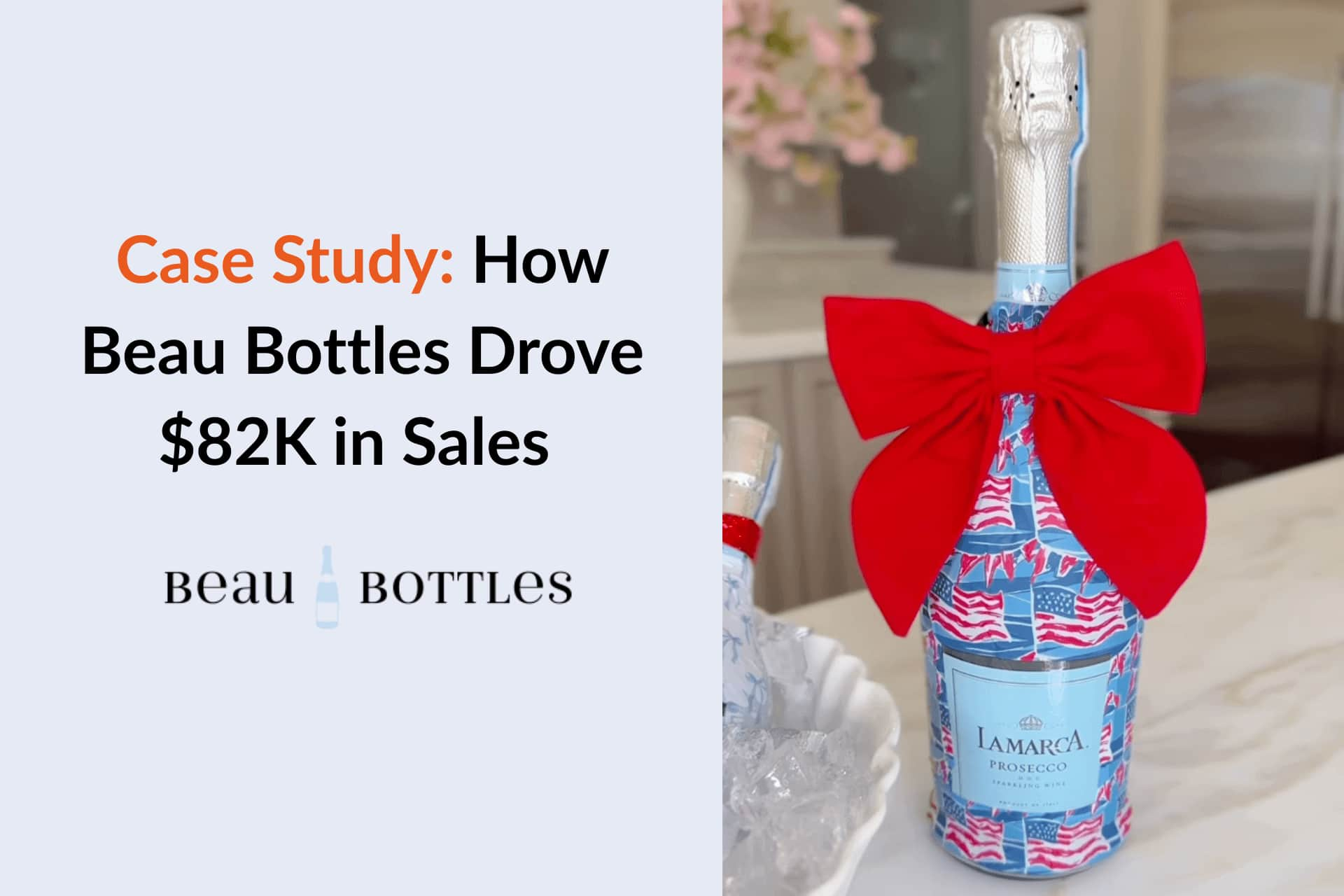





Choosing the right influencer marketing software can make or break your campaigns. While Markerly has been a known player in the space, many brands are now seeking alternatives because it lacks depth for niche markets, its analytics are less detailed compared to competitors, and its pricing is relatively high for the features offered, causing frustration among businesses looking for more value.
The influencer marketing software market is booming, projected to surpass $21.5 billion in global spend in 2025. This rapid growth means brands need tools that deliver measurable results and save time. In this article, we’ll cover the Top 10 Markerly Alternatives: Features, Pricing, and Reviews to help you choose a solution that fits your goals.
Top 10 Markerly Alternatives to Explore:
1. Influencer Hero
2. Modash
3. Upfluence
4. Captive8
5. CreatorIQ
6. HypeAuditor
7. Grin
8. Saral
9. Onclusive
10. MOGL
When considering influencer marketing platforms, many brands explore alternatives to Markerly because of several recurring challenges. These issues go beyond minor inconveniences and directly impact campaign effectiveness, strategy alignment, and overall ROI.
According to some users, Markerly does not provide detailed insights into influencers’ past collaborations or content strategies. This lack of transparency makes it harder for brands to evaluate how well influencers have performed in previous partnerships and whether their approach aligns with the brand’s goals.
Reviews also point out that Markerly falls short when it comes to tailoring campaigns to match specific audience segments. Without tools to align hero products with influencer content or audience sentiment, campaigns risk feeling generic and may fail to create meaningful engagement.
Another commonly mentioned issue is its limited support across newer or niche social platforms. Unlike competitors such as GRIN or Upfluence, Markerly’s restricted platform coverage can hold back brands looking to run multi‑channel campaigns that include emerging networks like LinkedIn or Snapchat.
Finally, many marketers express frustration over weak campaign analytics and ROI tracking. Discussions on Reddit highlight problems like fake followers, lack of performance validation, and unreliable attribution metrics, all of which make it difficult to prove the value of influencer partnerships.
Our comparison focuses on several key aspects:
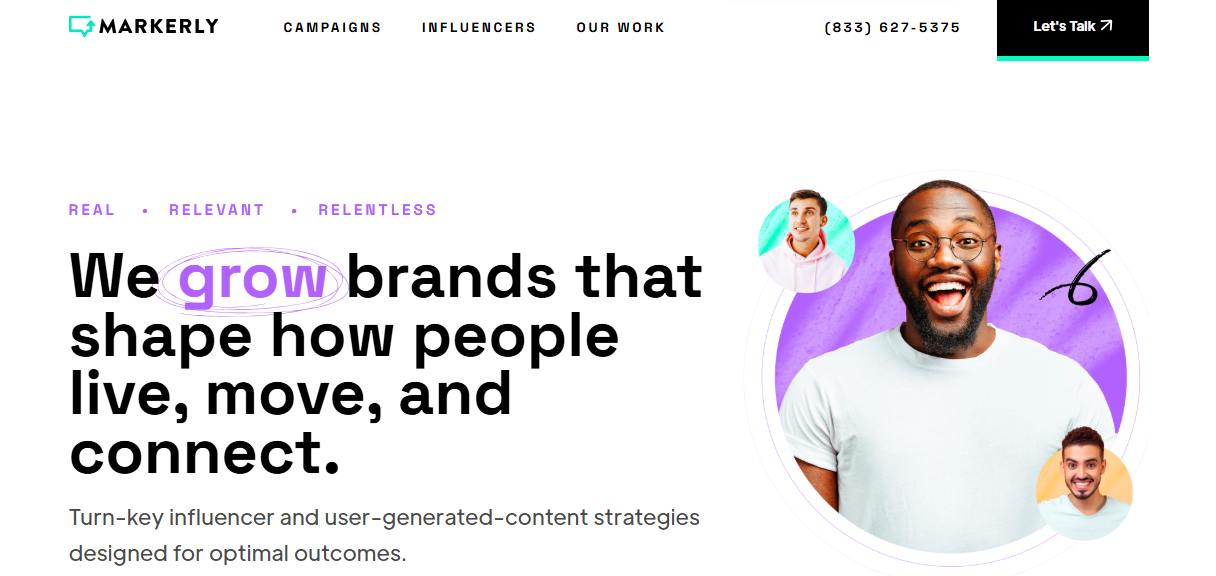
Best For: Markerly is best for brands seeking a fully managed influencer marketing service that emphasizes premium, high-quality content creation. It’s particularly suited for companies wanting hands-on campaign execution with a strong focus on content licensing and paid boosting.
Platform Coverage:
Pricing: Markerly offers customized pricing depending on the campaign scale and number of influencers involved.
Reviews: 4.5/5 (G2)
Ease of Use (UX/UI): Users highlight that Markerly’s platform is easy to navigate, with clear reports and accessible Google Drive dashboards that provide real-time visibility into campaign progress. Unlike self-serve SaaS tools, the platform is not overly automated, which users appreciate because it ensures human oversight and accuracy in every step.
Customer Support: Customer feedback frequently praises Markerly’s white-glove support, with a dedicated team managing influencer outreach, negotiations, and content approvals. Users value personalized communication and the proactive approach to solving campaign challenges quickly.
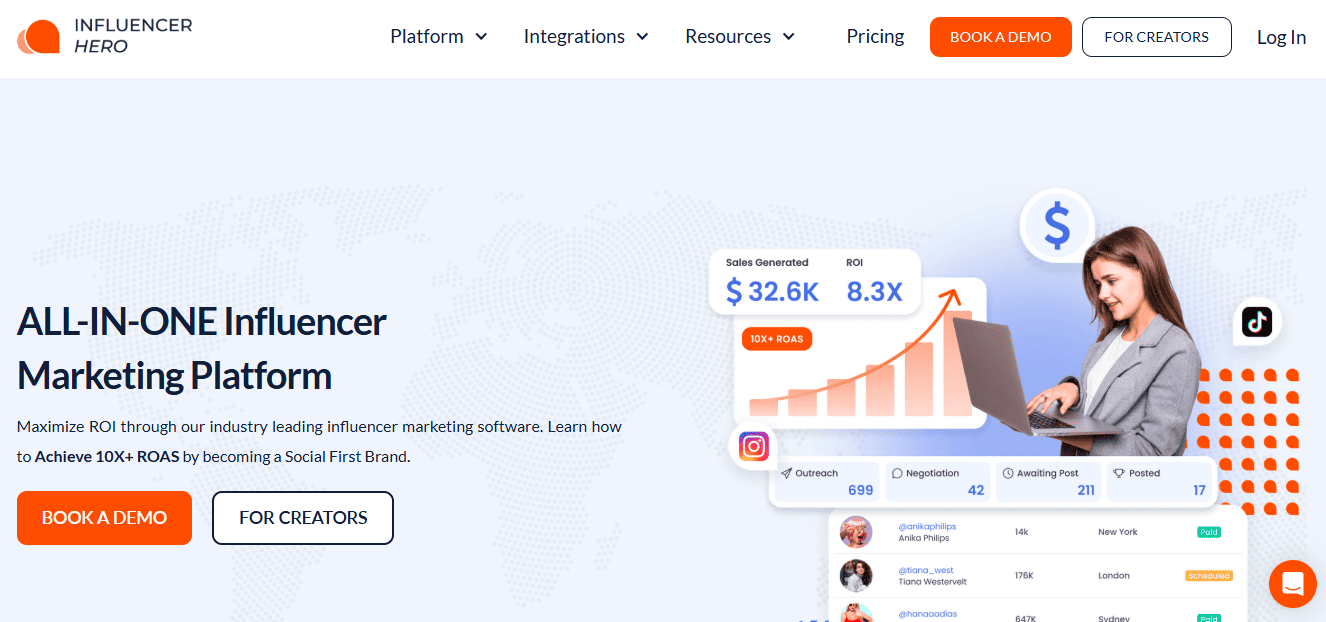
Best For: Influencer Hero is best for D2C brands and eCommerce teams (Shopify, WooCommerce, Amazon, and custom stores) looking to scale influencer marketing campaigns efficiently with AI-powered automation, multi-platform support, and ROI-focused tracking.
Platform Coverage:
Pricing: Influencer Hero offers flexible plans with no long-term contract requirements:
Reviews: 5.0 / 5.0 (Capterra)
Ease of Use (UX/UI): Influencer Hero is widely recognized for its intuitive interface and streamlined dashboard. Users appreciate the automated workflows, customizable email templates, and drag-and-drop campaign setup, which reduce manual effort and make managing campaigns fast and easy even for non-technical teams.
Customer Support: Customer support is one of Influencer Hero’s strongest assets. The platform offers 24/7 real-human live chat, responsive email support, and a comprehensive Help Center packed with written and video tutorials. Every plan includes a dedicated account manager from day one, with optional strategy consultations. Pro plan users also gain access to a private Slack channel for continuous and faster support.
While Markerly offers a premium, fully managed influencer service, it comes at a steep price—campaigns for 20–40 influencers can cost around $100K, and even smaller campaigns start at $18K/month. It also requires a six-month minimum contract and has limited automation, focusing instead on a high-touch, human-driven approach.
In contrast, Influencer Hero provides a more affordable and scalable solution, with plans starting at $649/month and even the Pro plan (supporting up to 5,000 creators) priced at only $1,049/month. Unlike Markerly, it combines AI-powered automation with powerful CRM, outreach, and multi-platform integrations, making it ideal for brands seeking efficiency and scale without the high agency-level cost.
Overall, Influencer Hero stands out as the cost-effective alternative that gives brands both automation and support, while Markerly suits those willing to pay a premium for an entirely managed, white-glove service.

Best For: Modash is best for eCommerce brands, especially Shopify-based stores, looking to scale influencer discovery, automate affiliate campaigns, and streamline influencer payments while maintaining control over outreach and performance tracking.
Platform Coverage:
Pricing: There are different plans and options.
Reviews: 4.7/5 (G2)
Ease of Use (UX/UI): Users highlight Modash’s clean and intuitive interface, making influencer search and campaign management straightforward. The AI-powered filters and integrated outreach save time, though advanced features may require a learning curve initially.
Customer Support: Customer support is praised for being highly responsive, with onboarding sessions helping brands maximize the platform. Users note that Modash frequently updates its platform and offers guidance when setting up complex workflows.
Markerly operates as a full-service influencer marketing agency, offering hands-on campaign management, custom content licensing, and paid boosting. However, this comes with a high price tag, starting at around $18K per month with a six-month minimum term, making it more suitable for brands with larger budgets and a preference for managed services.
In contrast, Modash is a SaaS platform designed for brands that want to manage influencer campaigns internally. It’s far more affordable, starting at $199/month, and provides powerful tools for discovery, outreach, tracking, and affiliate automation.
While Modash lacks built-in content licensing and does not handle paid media like Markerly, its scalability and automation make it ideal for brands looking to control costs and optimize workflows. For brands prioritizing cost efficiency and self-managed campaigns, Modash is an excellent alternative.

Best For: Upfluence is best suited for eCommerce brands—especially those on Shopify or Amazon—looking to run large-scale influencer and affiliate campaigns while tracking sales directly from influencer collaborations.
Platform Coverage:
Pricing:
Reviews: 4.5/5 (G2)
Ease of Use (UX/UI): Users appreciate the platform's robust search capabilities and campaign management tools, but note there is a learning curve due to its extensive features. Once set up, the interface is intuitive and helps streamline influencer marketing efforts.
Customer Support: Customer support is responsive, providing onboarding sessions and tutorials to shorten the learning curve. However, some users mention that support availability can be inconsistent during off-hours.
Markerly operates as a fully managed service, handling everything from creator sourcing to reporting with a human-driven approach, while Upfluence is a SaaS platform that empowers brands to run influencer campaigns internally with AI-driven tools.
Markerly prioritizes premium, hands-on campaign execution but comes at a high cost—around $18K/month and requires a minimum six-month contract. In contrast, Upfluence offers a self-serve platform with automation, Shopify/Amazon integrations, and a database of over 12M influencers, but also demands an annual commitment with pricing starting at $1,276/month.
For brands seeking end-to-end managed campaigns without internal workload, Markerly’s white-glove service is ideal. However, if you prefer greater control, automation, and powerful eCommerce integrations at a lower monthly cost (though with a learning curve), Upfluence is the stronger choice.

Best For: Captiv8 is best for enterprise-level brands seeking a data-rich influencer marketing platform that excels in competitive intelligence, campaign tracking, and large-scale creator collaborations.
Platform Coverage:
Pricing: There are different pricing options:
Reviews: 4.1/5 (G2)
Ease of Use (UX/UI): Users on G2 highlight that Captiv8’s interface offers advanced search and campaign management tools but note it can be overwhelming due to the platform’s complexity. While the dashboard is powerful, it has a learning curve, especially for teams new to influencer marketing software.
Customer Support: Reviews on Reddit and G2 mention mixed experiences with Captiv8’s customer support. Some users praise the platform’s onboarding and account management, while others report slow response times and unresolved issues, particularly regarding payment disputes.
Markerly is a full-service influencer marketing agency focusing on premium, high-touch campaigns where the team handles everything—from sourcing to reporting—without requiring users to navigate complex software. In contrast, Captiv8 is a robust SaaS platform, offering deep analytics, competitive intelligence, and storefront/affiliate options, but with a steeper learning curve.
When it comes to pricing, Markerly typically charges $18K–$25K/month with a six-month commitment, while Captiv8 requires a $25K annual contract plus additional monthly fees ($20–30K) for affiliate/storefront features. Markerly is ideal for brands seeking a managed, white-glove approach, while Captiv8 suits enterprise-level teams with the resources to leverage its advanced data tools and integrations.

Best For: CreatorIQ is best for large brands and enterprises looking for an end-to-end influencer marketing platform that supports discovery, campaign management, and analytics at scale. Its strong API integrations and strategic support make it ideal for brands with complex campaigns and global reach.
Platform Coverage:
Pricing: There are different plans:
Reviews: 4.7/5 (G2)
Ease of Use (UX/UI): Users on G2 highlight CreatorIQ’s interface as robust and feature-rich but note that the platform can have a learning curve due to its extensive functionalities. The customizable dashboards and live reports are praised for simplifying campaign tracking once mastered.
Customer Support: Customers frequently commend CreatorIQ for its dedicated implementation managers and customer success teams. Strategic support during onboarding and quarterly planning is highlighted as a significant benefit, with many users saying the support goes beyond troubleshooting to provide actionable campaign guidance.
Markerly is a managed service agency that prioritizes high-touch, quality-driven influencer campaigns. It handles everything manually—from creator sourcing to negotiations and reporting—making it perfect for brands that want a team of experts running their campaigns. However, Markerly comes with higher costs (starting around $18K/month) and requires a six-month minimum contract, limiting flexibility.
CreatorIQ, on the other hand, is a powerful SaaS platform that empowers brands to manage influencer campaigns themselves with extensive tools for discovery, management, and analytics. While it also requires annual contracts, it provides more control, automation, and scalability at a lower cost than Markerly’s managed approach.
Brands that prefer outsourcing campaign execution may favor Markerly, while those seeking data-driven control and in-house management capabilities will benefit more from CreatorIQ’s technology-driven solution.

Best For: HypeAuditor is best for brands and agencies that prioritize influencer fraud detection, audience authenticity, and advanced analytics when running influencer marketing campaigns. It’s especially suited for businesses looking to scale campaigns across multiple social media platforms while ensuring accurate, data-driven decisions.
Platform Coverage:
Pricing: HypeAuditor’s pricing is customizable, with the standard “Business” plan starting at around $10,000/year. Pricing can be adjusted based on the number of reports, active campaigns, and platform usage. They also offer a 24–48 hour free trial for new users.
Reviews: 4.6/5 (G2)
Ease of Use (UX/UI): Users frequently highlight HypeAuditor’s clean interface and robust filtering options, although beginners mention that the learning curve can be steep due to the platform’s extensive features. Once onboarded, users appreciate how the dashboard simplifies influencer vetting and campaign tracking.
Customer Support: Customer reviews describe HypeAuditor’s support as responsive and helpful, particularly during onboarding and campaign setup. However, some users note that advanced technical questions can take longer to resolve due to the complexity of their analytics.
Markerly operates as a full-service agency, offering white-glove campaign management where brands outsource everything from sourcing to content approval. This comes at a premium cost, with campaigns starting at $18K/month and requiring a minimum six-month contract.
In contrast, HypeAuditor is a SaaS platform that empowers brands to run campaigns themselves with powerful analytics, AI search tools, and fraud detection. Pricing for HypeAuditor is more flexible, starting around $10K/year, but it requires internal resources to operate effectively.
Brands should choose Markerly if they prefer hands-off, high-quality campaigns managed by experts. HypeAuditor, on the other hand, is ideal for data-driven teams that want to retain control over campaigns while leveraging top-tier fraud detection and analytics to optimize results.

Best For: GRIN is best for DTC and eCommerce brands that want an all-in-one solution to manage influencer programs, from product seeding and gifting to UGC collection, commission payments, and ROI tracking—all within one platform.
Platform Coverage:
Pricing:
Reviews: 4.5 / 5.0 (G2)
Ease of Use (UX/UI): Users generally find GRIN’s interface intuitive and centralized, allowing them to manage discovery, outreach, and campaign tracking seamlessly. However, some users on G2 mention occasional performance glitches and slow load times when handling large datasets. The platform’s layout makes it easy to track influencers, payments, and content in one place, streamlining campaign management.
Customer Support: Reviews on G2 indicate that GRIN’s customer support is often helpful, with dedicated strategists available for brands that opt for higher-tier plans. However, some users report delays in resolving tickets and inconsistencies in follow-up support. Overall, while support quality is strong when engaged, response times can vary depending on the complexity of the issue.
Markerly operates as a full-service influencer marketing agency, offering white-glove campaign management where their team handles sourcing, negotiations, approvals, and reporting. This comes at a premium price, with campaigns typically starting at $18K/month and requiring a six-month minimum commitment.
GRIN, on the other hand, is a software platform designed for brands that want to manage influencer relationships in-house, offering automation, scalability, and eCommerce-focused features.
From a pricing perspective, Markerly is suited for brands that prefer an agency-driven approach and are willing to invest in hands-off, high-touch management. GRIN, while also premium, starts at $25K/year and is ideal for DTC brands that plan to run influencer programs continuously and at scale, leveraging its AI-powered tools and integrations.
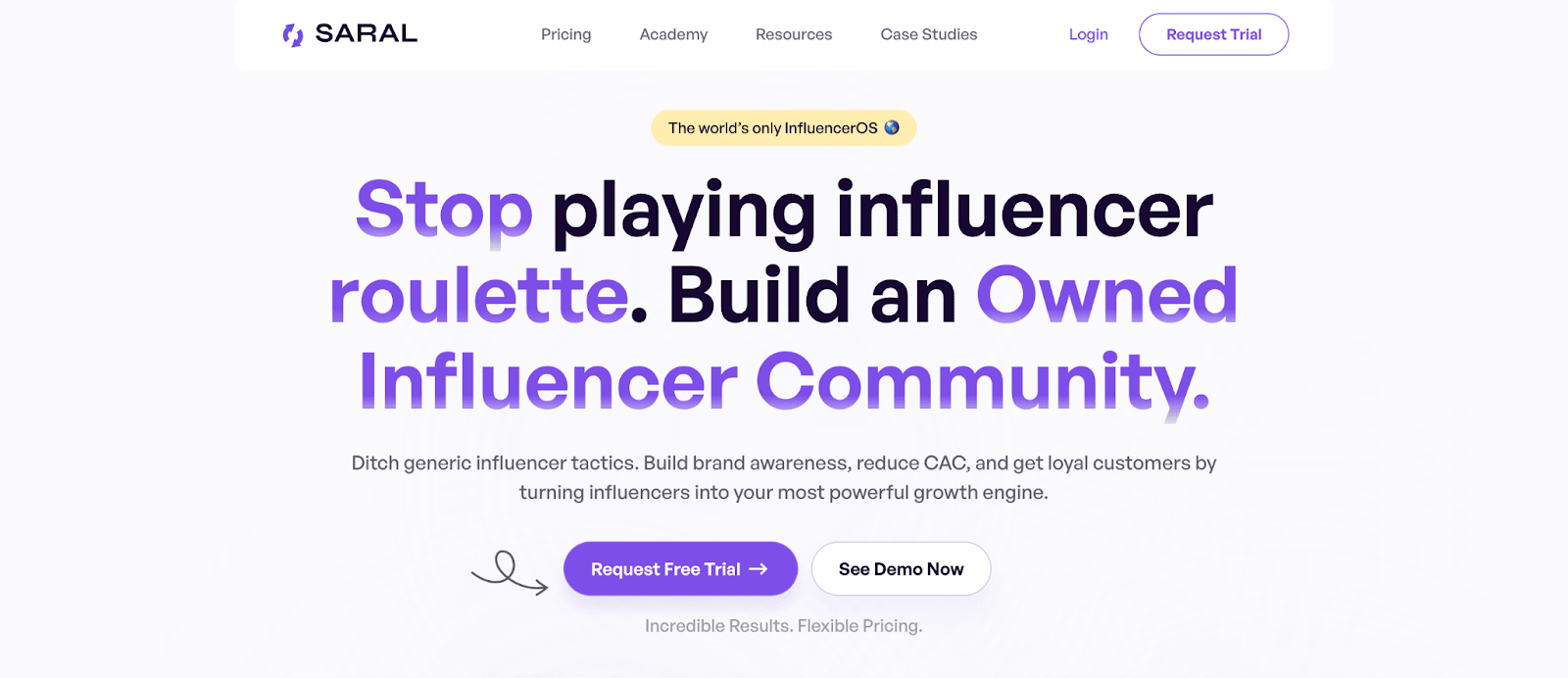
Best For: Saral is best for eCommerce brands on Shopify or DTC companies looking to scale influencer campaigns using a cost-effective, automation-friendly platform that supports gifting, affiliate tracking, and influencer outreach without needing an influencer marketplace.
Platform Coverage:
Pricing: All plans include a 1-week free trial; annual and quarterly payment options available.
Reviews: 4.7/5 (G2)
Ease of Use (UX/UI): Users on G2 and Reddit highlight that Saral offers a clean and intuitive interface, making it easy to search for influencers and manage campaigns. The real-time search engine allows quick results without requiring influencers to sign up, and users appreciate the straightforward list-building and outreach features.
Customer Support: Saral is praised for its responsive and helpful support team. Many users mention fast replies and proactive assistance during onboarding. The company also provides training sessions, which help brands set up campaigns efficiently and maximize platform capabilities.
Markerly is a premium managed service with a white-glove approach, where their team handles everything from influencer sourcing to reporting. This results in high-quality campaigns but comes at a steep price, starting at $12K/month with a six-month minimum commitment. It’s ideal for brands with large budgets seeking a fully hands-off experience.
On the other hand, Saral offers a SaaS solution that is more affordable (starting at $3,600/quarter) and automation-focused. Unlike Markerly’s manual processes, Saral empowers brands to take control of their campaigns with AI-powered influencer discovery, automated outreach, and Shopify-integrated gifting. However, it lacks the done-for-you campaign management that Markerly provides.
Brands looking for cost-effective scaling with full control over influencer campaigns may prefer Saral, while those who prioritize high-touch, expert-managed campaigns might find Markerly worth the higher investment.
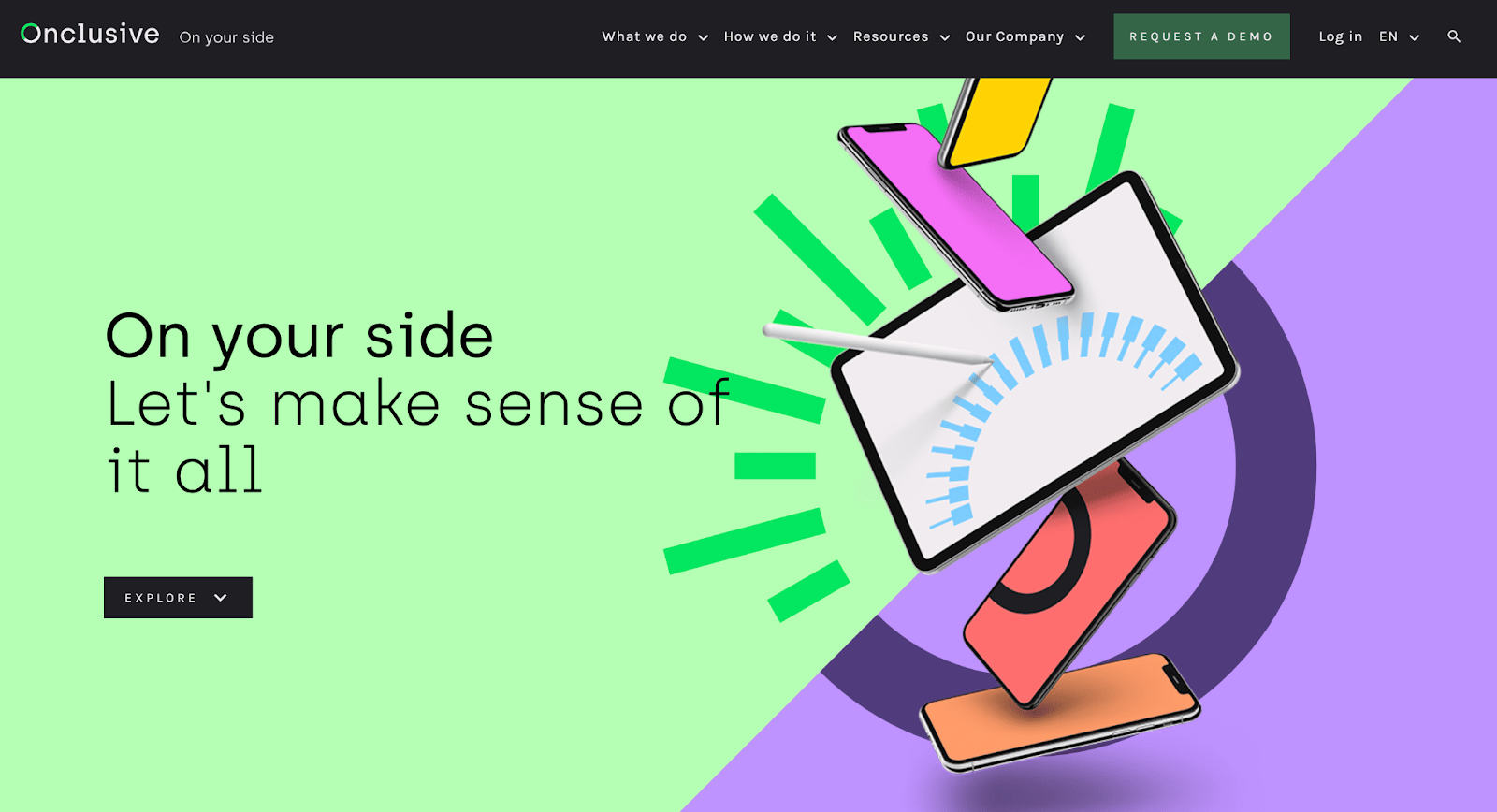
Best For: Onclusive is best suited for enterprise-level brands and PR teams focused on holistic media intelligence—combining influencer discovery, social listening, and traditional media monitoring across TV, radio, and news. It’s ideal for companies wanting unified insights into brand coverage, influencer impact, and earned media.
Platform Coverage:
Pricing: Onclusive’s pricing ranges between $8,000–$20,000 annually, depending on the scope of media monitoring and included modules. Billing is typically annual, though monthly billing can be arranged with approval.
Reviews: 4.5/5 (G2)
Ease of Use (UX/UI): Users generally find Onclusive’s interface powerful but with a learning curve, especially due to the breadth of media types and custom queries available. The platform supports highly tailored tracking and reporting, but new users often require onboarding and training to use it effectively.
Customer Support: Onclusive stands out for its personalized customer support, offering a dedicated account manager from the beginning. Users appreciate the hands-on guidance, including custom query setups, onboarding sessions, and continuous support throughout the contract.
Markerly is a full-service influencer marketing agency offering tailored, high-quality campaigns with end-to-end management, including creator sourcing, negotiations, content approvals, and payments. It’s ideal for brands with larger budgets (starting around $18K/month) that want a hands-on, premium service. However, its higher cost and limited automation may not suit all brands.
On the other hand, Onclusive is focused on media and influencer monitoring, providing social media tracking, sentiment analysis, and competitor benchmarking. It excels in influencer discovery and offers AI-powered insights across platforms like Instagram, TikTok, and YouTube. While it doesn’t provide full campaign management, it’s perfect for brands needing comprehensive monitoring and analytics.
Choose Markerly if you want a high-touch, end-to-end influencer marketing service. Choose Onclusive if you need social media tracking and influencer insights with powerful analytics tools.
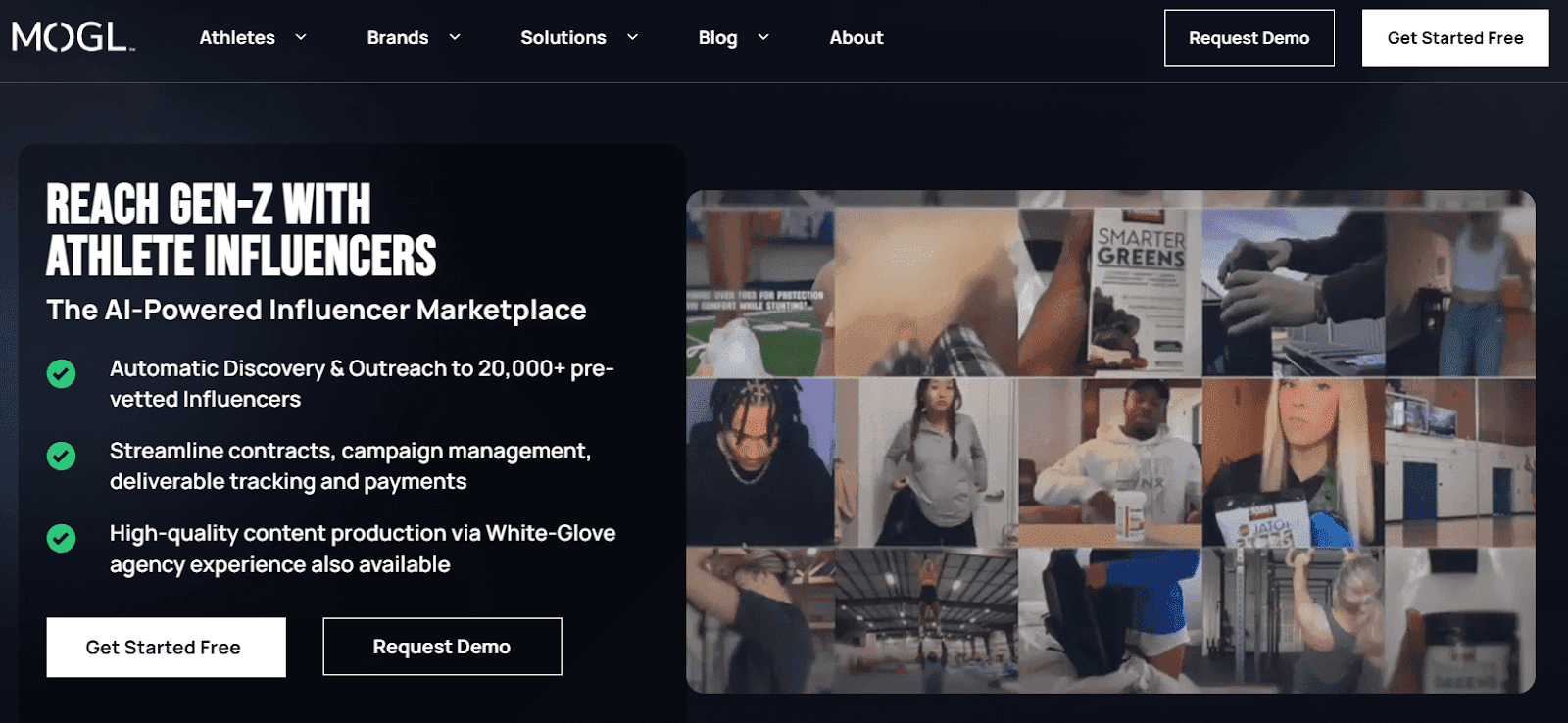
Best For: MOGL is best for brands aiming to connect with Gen-Z audiences through U.S. based athlete influencers. Its hybrid model suits brands that want both self-serve campaign management and optional managed services.
Platform Coverage:
Pricing:
Reviews: 4.5/5 (G2)
Ease of Use (UX/UI): Users highlight MOGL's straightforward and intuitive interface, making it easy to manage campaigns from discovery to payout. The inbound application feature streamlines recruitment, saving brands time on outreach.
Customer Support: Customers appreciate the responsive support team, particularly for Professional and Elite plan users who get enhanced assistance. The presence of a dedicated customer success manager in higher tiers ensures tailored support and campaign success.
Markerly is a premium, fully managed influencer marketing agency focusing on high-quality, hand-vetted campaigns. It’s ideal for brands with larger budgets (starting around $18K/month with six-month minimum contracts) that want a white-glove service covering everything from sourcing to licensing and reporting. However, its higher costs and limited automation may not suit all brands.
In contrast, MOGL offers a more flexible and affordable solution with its self-service model and optional managed services. Its pricing starts at $0/month for basic access, scaling up to $250/month for the Professional plan, making it significantly more accessible for smaller brands. The platform shines with its AI-powered matching, performance-based payouts, and inbound application flow, particularly for brands targeting Gen-Z audiences through athlete creators
Choose Markerly if you need end-to-end premium service with strong licensing strategies. Opt for MOGL if you prefer a scalable, AI-driven platform that balances cost-efficiency with accountability.
Markerly offers a premium, fully managed influencer marketing solution, but its high costs, six-month contract requirement, and limited automation can make it less suitable for brands seeking flexibility or scalability. Many marketers look for alternatives that provide greater automation, multi-platform coverage, and stronger ROI tracking without compromising on quality.
Among the best alternatives, Influencer Hero stands out by offering AI-powered discovery, automated outreach, and comprehensive CRM capabilities at a fraction of Markerly’s cost. With flexible plans, robust support, and tools designed to scale campaigns, it’s the ideal choice for brands ready to streamline influencer marketing.
Book a meeting with us today to see how Influencer Hero can help you boost performance and scale your influencer campaigns efficiently!

Many brands explore Markerly alternatives due to its high pricing, six-month contract requirement, and limited automation. While it offers premium, fully managed campaigns, some businesses prefer more cost-effective and scalable platforms like Influencer Hero, which provides AI-driven influencer discovery, automated outreach, and robust ROI tracking at a lower cost.
Some of the top alternatives to Markerly include Influencer Hero, GRIN, Aspire, and Upfluence. Among these, Influencer Hero stands out for its AI-powered automation, multi-platform coverage, and flexible pricing, making it ideal for D2C brands and eCommerce teams.
While Markerly focuses on hands-on, white-glove campaign management, it comes with a steep cost and limited automation. Influencer Hero, on the other hand, combines affordable pricing with AI-powered tools, automated workflows, and deep CRM capabilities—allowing brands to scale influencer marketing campaigns efficiently without long-term contracts.
Yes. Platforms like Influencer Hero offer plans starting as low as $649/month, compared to Markerly’s pricing, which starts at $12K/month and often exceeds $100K for larger campaigns. This makes alternatives particularly attractive for brands that want to maximize ROI without overspending.
For eCommerce-focused brands, Influencer Hero is one of the best options. It integrates with Shopify and WooCommerce, supports affiliate tracking, automates product seeding, and enables brands to scale influencer campaigns while keeping costs predictable and manageable.



Schedule a Demo with one of our media experts below.